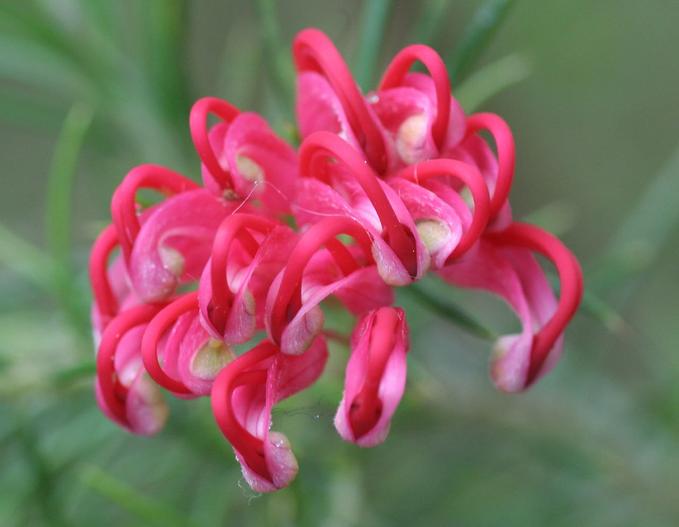Juniper Grevillea
(Grevillea juniperina)
Juniper Grevillea (Grevillea juniperina)
/
/

Liz Jones
CC BY 2.0
Image By:
Liz Jones
Recorded By:
Copyright:
CC BY 2.0
Copyright Notice:
Photo by: Liz Jones | License Type: CC BY 2.0 | License URL: https://creativecommons.org/licenses/by/2.0/ | Uploader: lizjones112 | Publisher: Flickr

























Estimated Native Range
Summary
Grevillea juniperina, commonly known as Juniper Grevillea, is an evergreen shrub native to the open eucalypt woodlands and dry sclerophyll forests of southeastern Australia, particularly in New South Wales. This species exhibits a variable habit, typically growing between 0.2–3 m (0.66–9.84 ft) in height, with a spreading or erect form. The leaves are small, stiff, and prickly, resembling those of a juniper, which is how it gets its common name. Grevillea juniperina is notable for its vibrant and showy inflorescences, which bloom from winter to early summer, presenting a striking display of red, orange, or yellow flowers that are rich in nectar and attract a variety of birds, including honeyeaters that act as pollinators.
In cultivation, Juniper Grevillea is valued for its long flowering period, bird-attracting qualities, and its use as a protective habitat for small birds due to its dense foliage. It is a versatile plant used in urban planting, as a border shrub, or for low-maintenance ground cover. This shrub thrives in a wide range of soil types, provided they are well-drained, and it can tolerate both full sun and part shade. It is drought-resistant once established, requiring very low amounts of water. Popular garden cultivars include ’Molonglo’, ’Canberra Gem’, and ’Gold Cluster’, each offering unique flower colors and growth habits. While Grevillea juniperina is generally hardy, it can be susceptible to root rot in poorly drained soils, and direct contact with the foliage may cause skin irritation in some individuals. Pruning can encourage denser growth, and although it can regenerate from seed after bushfires, cultivation typically involves propagation by cuttings to maintain desirable traits.CC BY-SA 4.0
In cultivation, Juniper Grevillea is valued for its long flowering period, bird-attracting qualities, and its use as a protective habitat for small birds due to its dense foliage. It is a versatile plant used in urban planting, as a border shrub, or for low-maintenance ground cover. This shrub thrives in a wide range of soil types, provided they are well-drained, and it can tolerate both full sun and part shade. It is drought-resistant once established, requiring very low amounts of water. Popular garden cultivars include ’Molonglo’, ’Canberra Gem’, and ’Gold Cluster’, each offering unique flower colors and growth habits. While Grevillea juniperina is generally hardy, it can be susceptible to root rot in poorly drained soils, and direct contact with the foliage may cause skin irritation in some individuals. Pruning can encourage denser growth, and although it can regenerate from seed after bushfires, cultivation typically involves propagation by cuttings to maintain desirable traits.CC BY-SA 4.0
Plant Description
- Plant Type: Shrub
- Height: 1-2 feet
- Width: 2-3 feet
- Growth Rate: Moderate
- Flower Color: Red, Yellow
- Flowering Season: Spring, Winter
- Leaf Retention: Evergreen
Growth Requirements
- Sun: Full Sun, Part Shade
- Water: Very Low
- Drainage: Fast
Common Uses
Bee Garden, Bird Garden, Butterfly Garden, Drought Tolerant, Groundcover, Hedges, Hummingbird Garden, Low Maintenance, Rock Garden, Salt Tolerant, Showy Flowers, Street Planting
Natural Habitat
Open eucalypt woodlands and dry sclerophyll forests
Other Names
Common Names: Juniper-Leaf Grevillea , Prickly Spider-Flower
Scientific Names: Grevillea juniperina
GBIF Accepted Name: Grevillea juniperina R.Br.